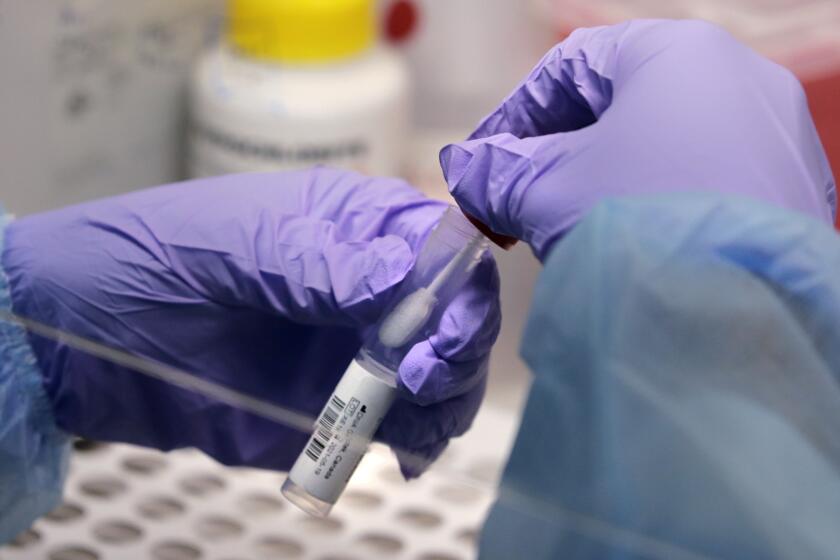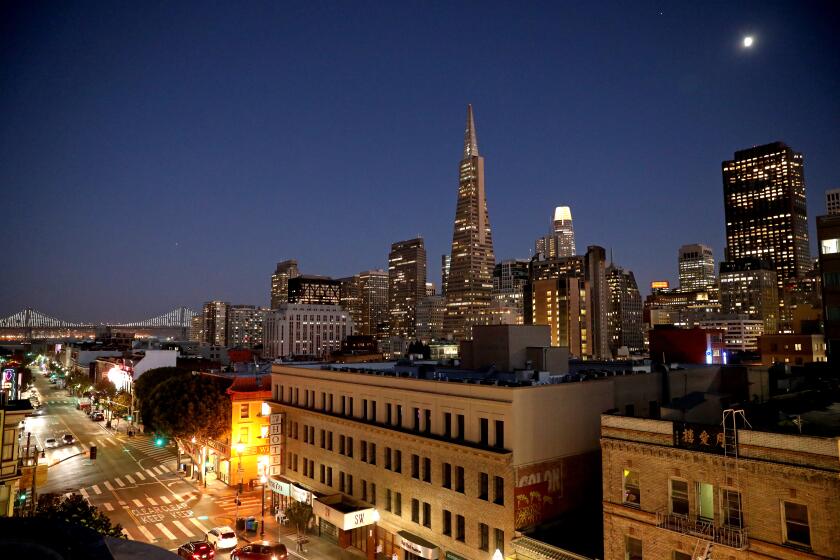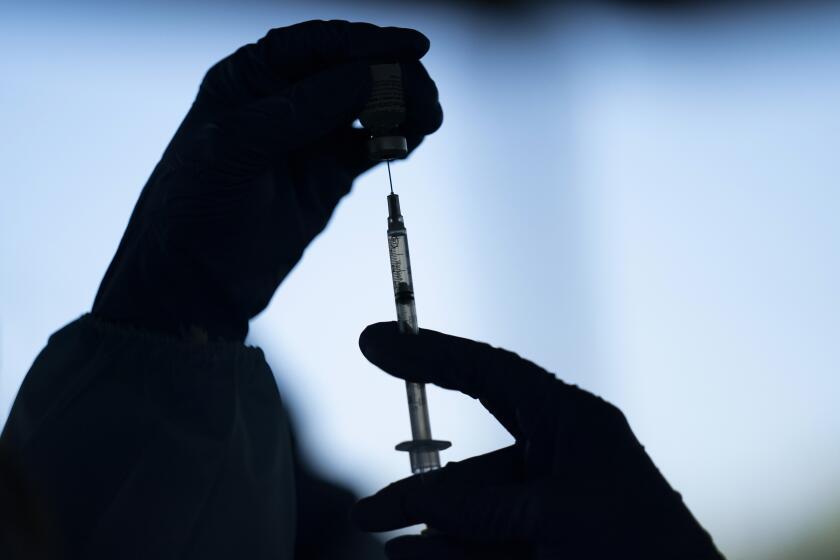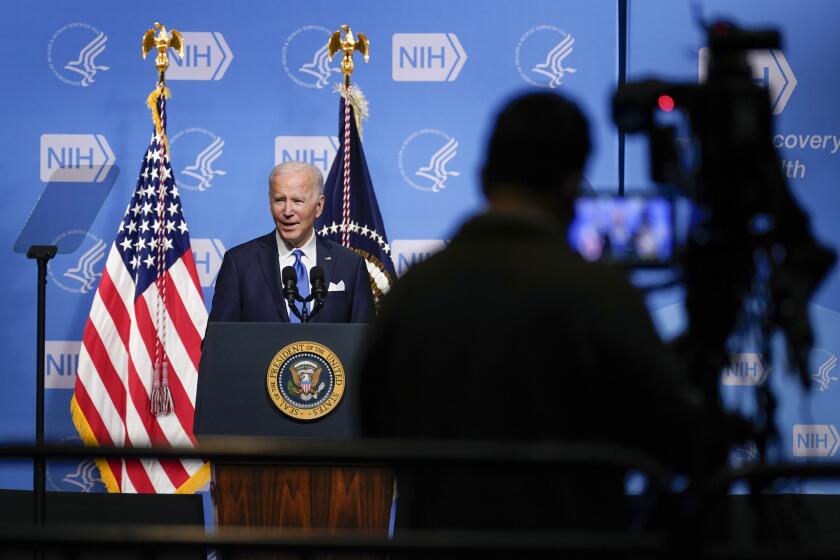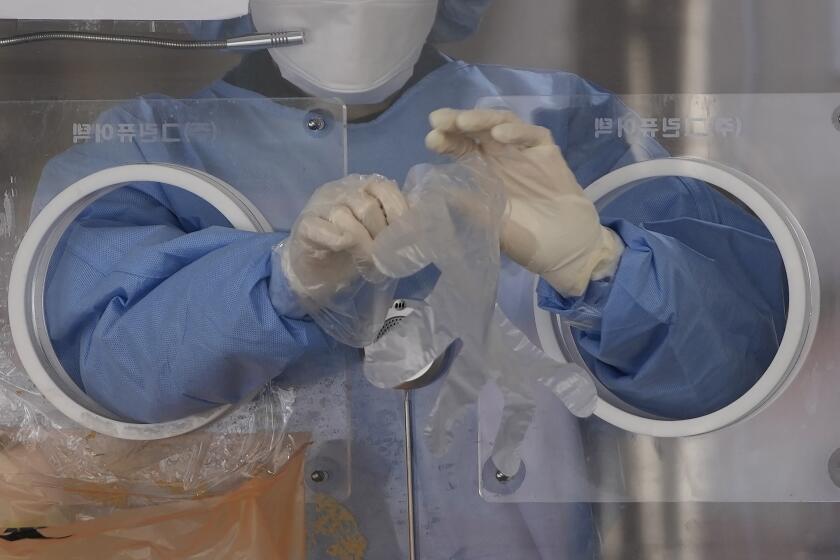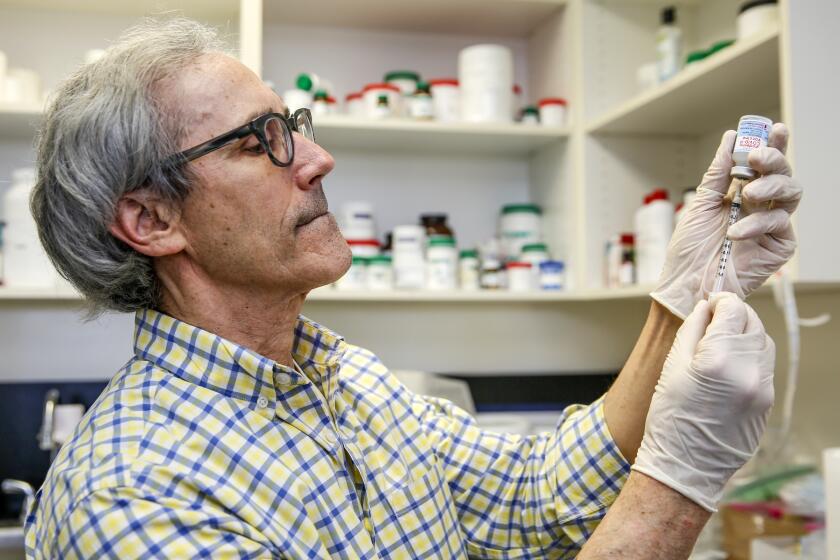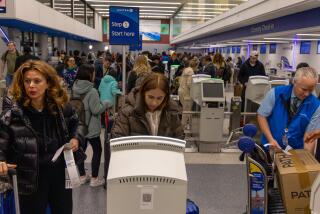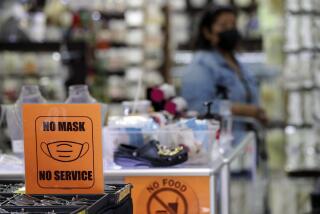How San Francisco confirmed the first U.S. Omicron case so quickly
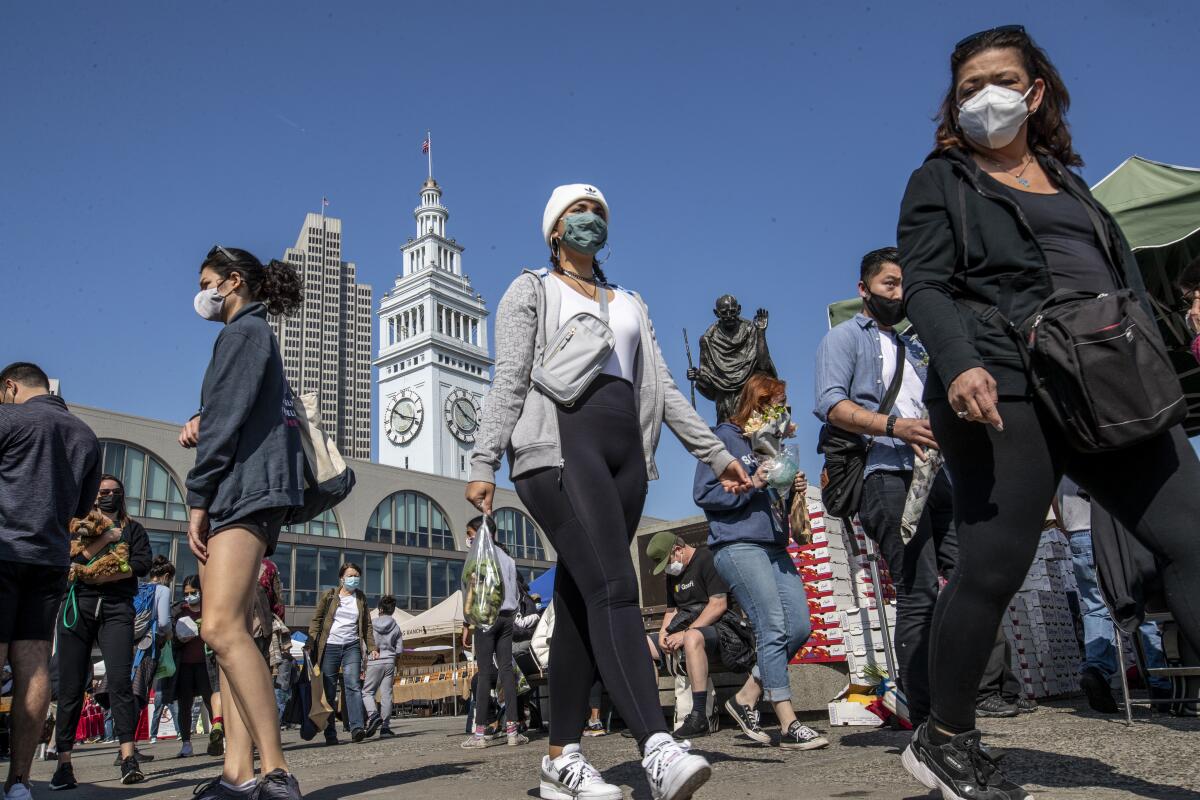
- Share via
SAN FRANCISCO — A UC San Francisco lab that analyzes positive coronavirus test results is a big reason behind the quick identification of the Omicron variant in California, the first documented case in the United States.
The lab run by Dr. Charles Chiu, an infectious disease specialist at UC San Francisco, routinely analyzes positive coronavirus cases in San Francisco for their genomic sequence to identify the variant.
Chiu said he first heard about the positive case at 3 p.m. Tuesday. The moderately ill San Francisco resident, who returned home Nov. 22 from a trip to South Africa, became symptomatic on or around Thanksgiving and got tested for the coronavirus Sunday. On Monday, the results came back positive.
Chiu’s lab received a sample of the detected coronavirus by 8 p.m. Tuesday. Scientists ran a fast molecular test, which produced results in two hours that were suggestive, but not conclusive, that the coronavirus that sickened the resident was the Omicron variant.
“To confirm this finding, we needed to sequence the genome — the viral genome — of this virus,” Chiu said. By 4 a.m. Wednesday, the scientists had assembled most of the genome and “we were able to conclusively demonstrate that this was, indeed, an infection from the Omicron variant.”
As expected, the Omicron coronavirus variant, first detected last month, has reached the U.S., with the first case found in California.
The sequence was also confirmed as being consistent with the Omicron variant at the U.S. Centers for Disease Control and Prevention, according to Dr. Anthony Fauci, President Biden’s chief medical advisor for the pandemic.
The lab sample was sent to UC San Francisco from Color Health, a Burlingame, Calif.-based company that partners with the San Francisco Department of Public Health to provide coronavirus testing services.
Virtually all positive coronavirus test results identified in San Francisco by Color Health are being routed for genomic sequencing to identify its variant, said Scott Topper, vice president of clinical operations at Color Health.
San Francisco health officer Dr. Susan Philip said the quick identification of the Omicron variant would not have been possible without UC San Francisco and Color Health, as well as the resident who decided to get tested for the coronavirus, recognizing that recent travel to South Africa and mild symptoms of illness were cause to get tested.
The fully vaccinated individual returned home from South Africa on Nov. 22 and subsequently tested positive for the Omicron variant of the coronavirus.
The resident had been home in San Francisco for a couple of days before South African scientists disclosed the discovery of the concerning new variant. South Africa announced it had detected the variant — initially named B.1.1.529 — on Nov. 24.
Two days later, the World Health Organization declared it a “variant of concern” and assigned its Greek-letter name, Omicron.
The San Francisco resident “recognized that they had recently traveled; they recognized that they had symptoms; and they did what we should all be doing — which is to go and get tested,” Philip said.
The person then reached out to the San Francisco Department of Public Health. The person has been staying home, under isolation, and health officials are in the process of finding out people who may have been in close contact with the resident. A close contact is defined as someone who has been within six feet of someone for 15 minutes or more.
“This person was aware of the news of Omicron, and that’s why they appropriately reached out after they returned from travel and then had their positive test result through the Color laboratory,” Philip said. We “really appreciate that person’s awareness and collaboration on this case.”
The recent discovery of the Omicron variant of the coronavirus has upended the outlook for a pandemic that was expected to get worse over the winter.
Officials in Los Angeles County are also regularly conducting genomic sequencing of confirmed coronavirus cases — not just to keep an eye out for Omicron, but to see if any new trends are emerging.
“Currently, anywhere between 1,500 and 5,000 positive specimens from L.A. County residents are sequenced each week, with results reported to both L.A. County and to the state,” Public Health Director Barbara Ferrer said during a briefing. “And we’re going to continue to rely on the network we have of commercial and public health labs to ensure that we’re receiving a representative assessment of the prevalent variants.”
Those efforts have for months yielded the same result: The hyper-infectious Delta variant remains the dominant strain countywide. For the week of Nov. 20, Delta accounted for 100% of sequenced specimens, according to Ferrer.
But on Thursday evening, officials also reported their first Omicron case — an individual who had recently returned to the county from South Africa.
“While we can’t know for certain the impact of Omicron at this time, the good news is that we already know how to reduce transmission and slow spread using both pharmaceutical and non-pharmaceutical interventions,” Ferrer said in a statement.
President Biden said Thursday that his plan for COVID-19 ‘pulls no punches.’
The infected San Francisco resident has been identified only by age — between 18 and 49 — and had been fully vaccinated with Moderna but hadn’t received a booster shot, authorities said.
Prior to the infection, the resident was healthy. The infection caused mild symptoms that did not require hospitalization, officials said.
The person has since recovered, said Dr. Grant Colfax, San Francisco’s director of health.
Close contacts of the resident thus far have tested negative, Fauci said.
The California Department of Public Health says everyone “should immediately get tested for COVID-19 if you are feeling any symptoms — regardless of your vaccination status. COVID-19 symptoms can feel like a common cold (including just ‘the sniffles’), seasonal allergies or flu. COVID-19 testing in California is free to anyone who needs it. You can book a free test appointment, find a walk-in test clinic or buy a self-test kit from your local drugstore.”
Omicron’s impact on the COVID-19 pandemic will depend on a variety of factors that will take days to weeks for scientists to untangle.
State health officials also advise everyone to wear masks in indoor public places, such as grocery stores and movie theaters, regardless of vaccination status, and for everyone 5 and older to get vaccinated. Some counties in California require masks in indoor public places, including most in the San Francisco Bay Area as well as Los Angeles and Ventura counties.
Fully vaccinated adults should get a booster shot, health officials say. Those who got their second dose of the Pfizer or Moderna shots at least six months ago or their Johnson & Johnson vaccination at least two months ago are eligible for a booster.
In people who got a booster shot, levels of neutralizing antibodies exceeded the peak that followed two doses of COVID-19 vaccine.
Demand for booster shots is picking up in some parts of California. The county just south of San Francisco, San Mateo County, recently reported that demand is so high for booster shots that officials no longer are allowing walk-in vaccinations at the county-run site at the San Mateo County Event Center.
Booster shots are also in high demand in Marin County. Some pharmacies have run out of doses in recent days and are working to replenish supplies, KGO-TV recently reported.
More to Read
Sign up for Essential California
The most important California stories and recommendations in your inbox every morning.
You may occasionally receive promotional content from the Los Angeles Times.
